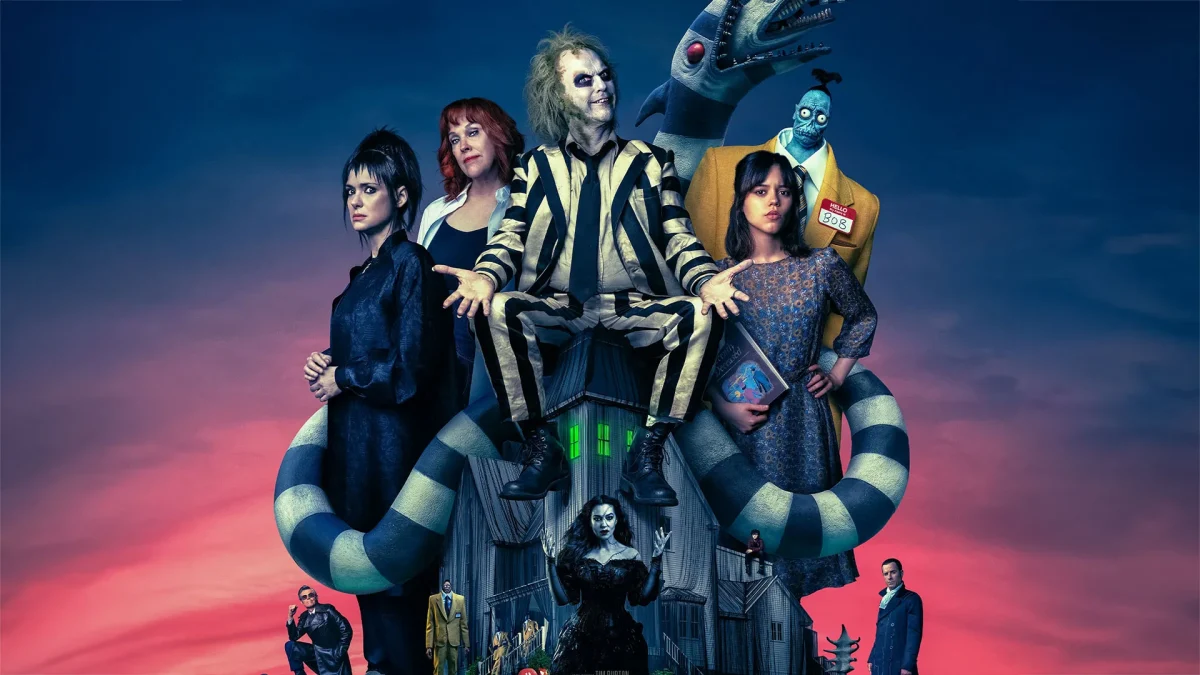The movie opens with a familiar set of spiked bangs and a black dress. Lydia Deetz is hosting her show, “The Ghost House,” where she investigates haunted houses and communes with haunting spirits. The audience quickly learns that she is in a relationship with her producer, Rory, and has a daughter named Astrid, whose father died years earlier.
Already, the movie stays true to the classic Tim Burton style. The scenes and settings are campy and over-the-top, with a spooky atmosphere laid over the story, making the movie visually fun to watch.
Reprising their roles, Winona Ryder and Catherine O’Hara, as Lydia and Delia Deetz, are able to maintain their characters’ personalities while demonstrating how their relationship has grown over time. As Lydia’s daughter, Jenna Ortega was able to separate Astrid from her mother while also remaining connected to Lydia. In an interview with CBR, Ortega stated, “I didn’t want [Astrid] to be Lydia, so I just made sure they had similar characteristics.”
The writers of “Beetlejuice” stated that their story aimed to explore the experiences of the Deetz women and their relationships with the men in their lives. “It’s actually about those women and the terrible men in their lives… Beetlejuice with Lydia, Jeremy with Astrid, and Rory with Lydia, too,” stated Alfred Gough, a writer on the movie. While the women of this story certainly stole the spotlight, very little of this claim actually made it into the film. More emphasis should have been placed on the relationship between these three Deetz women rather than their relationships with men.
Two of the male characters in the movie, Rory—Lydia’s fiancé—and Jeremy—Astrid’s undead boyfriend—are largely irrelevant. It seems that Rory’s character was added to the story solely for the purpose of having another wedding setting; the big “reveal” of his motives at the end is just overly predictable. Initially, he is presented as a character similar to Delia, a stepparent trying overly hard to connect to their stepchild, and at the end, we find that he had actually been using Lydia for monetary gain, which is overtly clear throughout the movie.
Close to the beginning of the movie, Astrid bumps into a boy who lives near the house where Lydia grew up. Jeremy Frazier, played by Arthur Conti, tricks Astrid on Halloween into trading her life for his, allowing him to return to the world of the living. However, the character acts more like a plot device to bring the audience back to the land of the dead rather than being an interesting character in the story.
The audience is also introduced to Betelgeuse’s ex-wife, Dolores, played by Monica Bellucci. Dolores has a masterful introduction; the audience gets to watch the soul sucker piece herself back together with a stapler, then devour the soul of a maintenance worker, making the scene eerie yet powerful. Her introduction gives the impression that this character could be the main villain, possibly requiring Lydia and Betelgeuse to team up in order to take her down. Unfortunately, Dolores plays little to no role throughout the movie, never giving the audience more than a twinge of tension.
Each character is introduced with the intention and the potential for depth and development, but the writers’ neglect of these characters and their connection to the plotline points to a bigger issue in “Beetlejuice”. The movie felt like a money grab in the guise of nostalgia—something that many recent sequels and reboots have in common. “Beetlejuice” serves as a reminder that fan service does not always make a great movie, and if a producer wants something to recapture the charm of the original “Beetlejuice”, more time needs to be spent crafting a cohesive story with dynamic characters.








